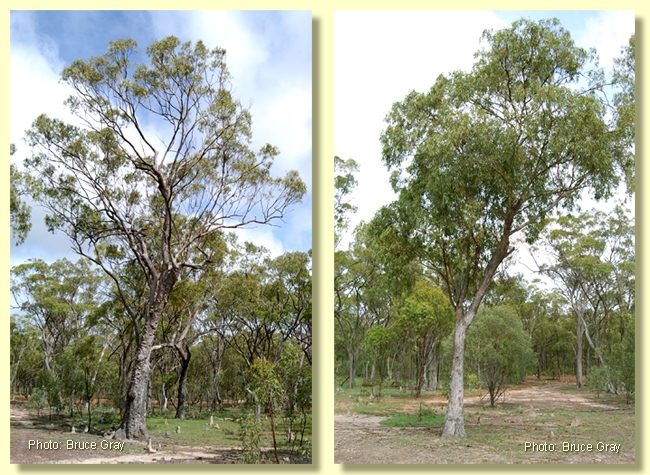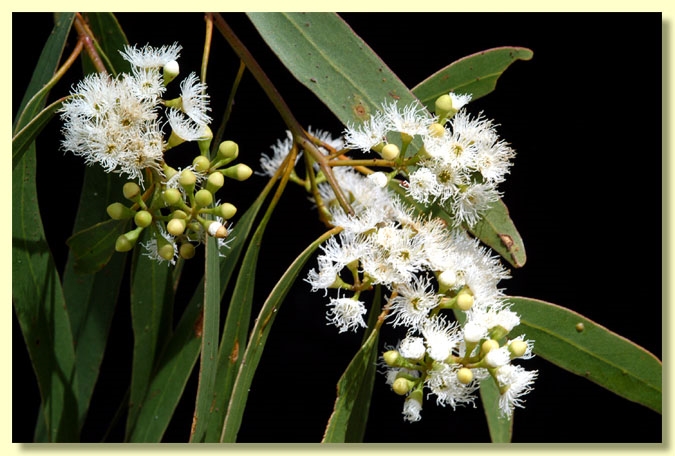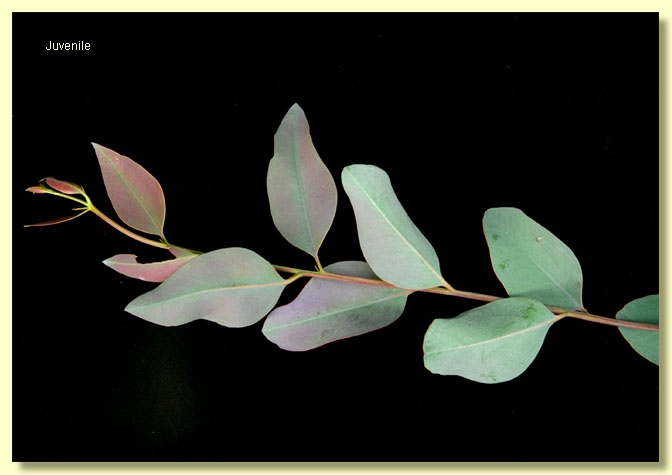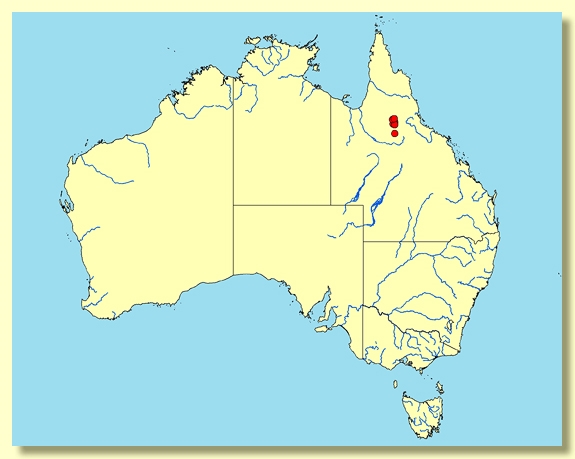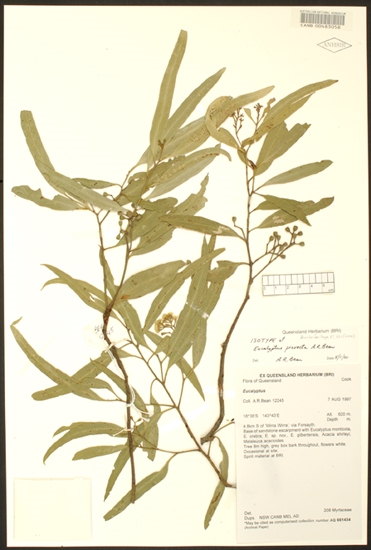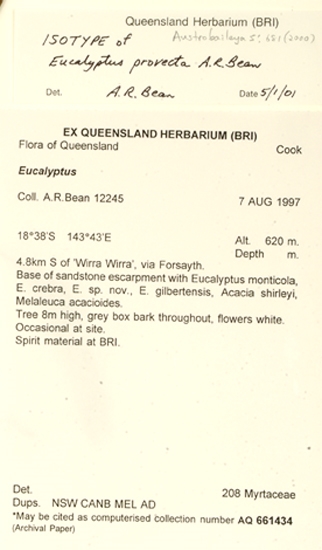Eucalyptus | Symphyomyrtus | Adnataria | Apicales | Buxeales | Amissae
Euclid - Online edition
Eucalyptus provecta
Tree to 12 m tall, rarely a mallee. Forming a lignotuber.
Bark rough, grey, box-type, extending to the small branches.
Branchlets lack oil glands in the pith; not glaucous.
Juvenile growth (coppice or field seedlings to 50 cm): stems square or rounded in cross-section; juvenile leaves shortly petiolate, alternate, ovate to lanceolate, 4.5–9(12) cm long, 1–3.2 cm wide, dull, grey-green.
Adult leaves alternate, petioles 0.5–1.7 cm long; blade lanceolate to narrowly lanceolate, 6.5–13 cm long, 0.8–2 cm wide, base tapering to petiole, margin entire, apex finely pointed, concolorous, dull, green, side-veins acute and somewhat irregular, reticulation dense to very dense, intramarginal vein present and well removed from the margin, oil glands mostly intersectional.
Inflorescence terminal compound, peduncles 0.2–0.8 cm long; buds 7 per umbel, pedicels 0.2–0.6 cm long. Mature buds obovoid, 0.3–0.5 cm long, 0.2–0.3 cm wide, scar present (outer operculum shed early and often remaining semi-attached at the apex of the inner operculum), operculum rounded, sometimes apiculate, stamens inflexed, outer stamens without anthers (staminodes), anthers ± adnate (filament apex tapers slightly), basifixed, cuboid to globoid, dehiscing by lateral slits, style long or sometimes shorter (c 3/4 the length of the operculum), straight, stigma blunt to tapering, locules 3, the placentae each with 4 vertical ovule rows. Flowers white.
Fruit on pedicels 0.3–0.6 cm long, cup-shaped, 0.3–0.5 cm long, 0.35–0.5 cm wide, disc descending vertically, valves 3, usually enclosed, sometimes at rim level.
Seeds brown, 1–2 mm long, flattened-ovoid, dorsal surface shallowly reticulate, hilum ventral.
Cultivated seedlings (measured at ca node 10): cotyledons small, more or less reniform; stems usually square in cross-section; leaves always petiolate (petioles to 0.7cm), opposite for 5 to 10 nodes then becoming alternate, lanceolate, 4.5–11 cm long, 0.8–2.4 cm long, base tapering to petiole, apex pointed or blunt, dull, green to blue-green or grey-green.
Flowering has been recorded in January, May, June, July and October.
A small tree or rarely a mallee restricted to North Queensland from Bulleringa National Park north of Mt Surprise, south through the Newcastle Range area between Einasleigh and Forsayth and also the Gregory Range area south of Forsayth to the Chudleigh Park Station north of Hughenden. Characterised by its rough box type bark to the small branches, its lanceolate juvenile leaves, its adult leaves with the secondary veins somewhat irregularly spaced and at an acute angle to the midrib and the intramarginal vein well removed from the margin, its terminal inflorescences, buds with the stamens stamens inflexed with an outer whorl of staminodes and the cup-shaped fruit where the valves are enclosed or near the rim.
Closely related to E. normantonensis, both having buds where the outer operculum sheds early in development leaving a scar and with an outer whorl of staminodes. E. normantonensis differs by having basal rough box bark but smooth bark on the upper branches; E. provecta is rough-barked to the small branches. Also closely related to E. persistens. E. persistens differs by usually having all stamens fertile (E. provecta with outer whorl of staminodes). E. persistens subsp. persistens differs further by normally retaining its outer operculum until anthesis—no operculum scar (E. provecta sheds its outer operculum early in bud development—with an operculum scar).
Within its area of occurrence, it could be confused with another box species, E. microneura. E. microneura differs by normally having glaucous buds and fruit.
Eucalyptus provecta: Latin provecta, advanced, carried forward, extended, referring to the rough bark extending throughout.

